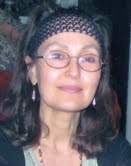
THINKING IN A NEW WAY—Overcoming Habits (Part 1 of 6): The Value of Quietness
Selma Gokcen
We can overcome habits of a lifetime in a few minutes if we learn to use our brains. —F.M. Alexander
The obstacle is the path. –Zen proverb
I offer this six part series of articles to demonstrate how I work with the Alexander Technique to help musicians to overcome deeply ingrained habits. If a quick and easy fix is what is wanted, then the reader won’t find it here. The process as I see it is multi-layered—the same habits that affect our cello playing and music-making are also our habits of life, the way we perceive, react and behave, moment to moment. Such observations are at the heart of Alexander’s work. Albeit with the help of a good teacher the process of unlearning habits can be easier, there are no shortcuts.
In one word, the Alexander Technique is about attention, so said Patrick Macdonald, an outstanding first generation teacher of the work. There is a particular quality of attention that animates and manifests from the whole self functioning in harmony. Pablo Casals is good example of this free attention in action. In his filmed performances, there is neither strain nor collapse, no pushing, no forcing, yet a powerful expressiveness is at his fingertips.
In Part I, I discuss the initial step in this re-education of the attention. The prerequisites on the part of the pupil are a sincere wish to learn, patience (an endless supply!) and the willingness to experiment and explore, even to go wrong. This process is a journey into the unknown, rediscovering what Nature intended for us but on a conscious plane. Once our thinking has changed, we have a better path through the forest, and the old path, while it may never disappear entirely, is no longer the path of choice.
I begin from a simple place…observation. I watch my prospective students as they come in the door, sit down, explain their problems, and answer a few questions. The primary information comes not from the story they tell me but from the way it is told, through the movements of their eyes, head, shoulders, arms, back, legs and feet, yes even their feet. One of my pupils used to curl her toes into a ball when she would describe her performances. The whole body spells out the inner story, the process of thinking. How much of their movement is automatic and subconscious, and how much is conscious?
Then they play a little for me, and what I am watching for could be defined in four general areas:
- The integrity of the head/neck/back and pelvis in movement; the proper degree of tension
- The movement of the eyes; the ‘width of attention’
- The breathing
- How weight transference is occurring (related to No. 1)
The secondary areas are the limbs—arms, hands and fingers, and the legs and feet. They function in relation to the primary pattern of head, spine and pelvis. If this primary pattern is brought into proper functioning and the manner of paying attention is freed up, then problems of the arms, hands and fingers experienced by cellists are much easier to sort out.
After this initial encounter, we put the cello out of sight because the instrument evokes too strong a response as a learning medium. We want to allow time to explore the principles of the Alexander Technique and to begin to ‘live the work’ apart from playing. In this I follow the example of Alexander himself, who put aside his dramatic recitations until he could master a simple habit of life—opening his mouth to speak.
We begin by exploring what it means to be quiet, truly quiet within, without the desire to be doing something. ‘Doing’ is always associated with a habit already laid down in the nervous system. Coming to quiet is the first step in freeing oneself from the power of habit, and its importance cannot be overestimated.
First in their lessons, then on their own, my students spend 20 minutes a day lying on their back with knees up and feet on the floor, in a quiet state of mind, allowing their thoughts to still. They are learning the psychophysical (mind-body) process of inhibition (coming to quiet) and sending directions. From this place of quiet, the mental messages they learn to send are: to allow the neck to be free, the head to rest freely on the small book under it, to allow the back to lengthen and widen, and the hips and pelvis to rest on the table or floor.
Over time and with practice, the mind comes to quiet with one thought; however, this training of the attention can be difficult in the beginning. I sometimes lose pupils at this early stage, and the excuses vary from not having time for quiet, to wanting to get on with playing, to thinking of being quiet as a waste of time. Not everyone is ready or willing to put aside a habit in this manner.
Later on, pupils learn to sit quietly with the cello, but without playing, providing immensely valuable feedback about how much they hold onto themselves and the instrument, and whether they allow the cello its own place in this partnership. Two can become One in the proper frame of mind. Through the process of becoming quiet, habits can be seen, and once truly seen and understood, the work of change is underway.
In the words of Patrick Macdonald: “First you have to learn to think and not to do; then later you learn to let the doing come out of the thinking.”
Subjects: Playing Healthy
Tags: Alexander Technique, animate, arms, attention, automatic movement, back, behave, brain, cello, cellobello, collapse, doing, exploration, feet, fingers, force, Gokcen, Habits, hands, laying on the floor, learning, legs, manifest, mental messages, music, music-making, nature, neck, Observation, overcome deeply ingrained habits, Pablo Casals, Patrick Macdonald, perceive, powerful expressiveness, pressure, primary information, process, pushing, re-education, react, rediscovering, Selma, shortcuts, shoulders, strain, stretching, the value of quietness, thinking
